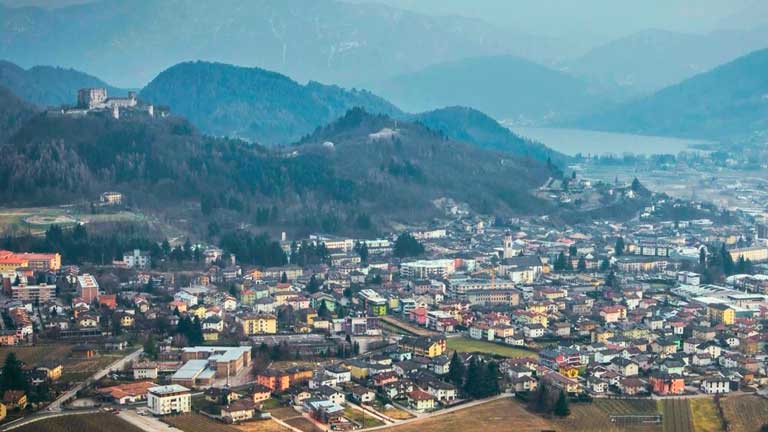


PERGINE VALSUGANA
With the third highest population in the autonomous Province of Trento, after Trento and Rovereto, it has 21,378 inhabitants. It is home to the Comunità di Valle Alta Valsugana e Bernstol head office and located at the mouth of the Fersina Valley with the Valsugana, which starts in Pergine. The inhabited centre is dominated by the bulk of the Castel Pergine. The area has a long history of human inhabitation as shown by the discovery of Rhaetian age relics in Montesei di Serso. The first documented mention of Pergine dates back to 845, while the parish church was first mentioned in 1183. Politically it belonged to the episcopal principality of Trento while ecclesiastically it belonged to the episcopate of Feltre. In 1356 the city passed under the Count of Tyrol to then return to the Trentino bishop in 1531. The most noteworthy buildings include the parish church of Santa Maria, built in 1556 on a pre-existing church perhaps of Longobard origin.
There are a number of historical buildings, including the "casa dei canopi", the headquarters of the brotherhood established in the XVI century to reunite miners working in the Perginese area from the Middle Ages: in 1502, in fact, the headquarters of the Giudice minerario (Mining Judge) was based in Pergine. The main part of the Park area, which is also the most interesting, is located on the slope leading down towards the mouth of the Valle dei Mocheni with a series of mining sites of historical interest: the Gallerie Minerarie (mining tunnels with relative landfills) in the area of Viarago, at the feet of Mount Predolcia.
The Miniera delle Volpare, in Serso, also characterised by a Rhaetian origin site part of which can still be visited today. And there is more: the Mines of Valar, the Miniera Fontanelle, also in Viarago and, moving towards the Valle dei Mocheni, the Miniera di Canezza, located where the Rio Rigolor meets the Torrente Fersina. Beyond Viarago, moving towards Mala, the Rementil Galleria Mineraria, which is still today of great interest. If we move, on the other hand, towards the Pinè Plateau, we find another relatively important mining area, known as Nogarà, near the inhabited area of Nogarè.
On the western side of the Pergine plains we find the Grotta del Bus del Giaron: this is a rather unimportant karst well in the Terra Rossa, on Mount Marzola. Remaining in the Dos dei Corvi area, a stratigraphic site where the formational limit between the Anisian units and the Contrin platform emerges.
back